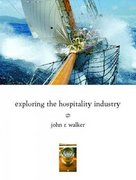Question
Would you please comment on this discussion and add your thoughts? When considering a project, each organization and person has a different view of risk.
Would you please comment on this discussion and add your thoughts?
When considering a project, each organization and person has a different view of risk. In other words, there are those whose tolerance for risk is neutral, those who avoid risk, and those who seek risk.
Risk utility is the amount of satisfaction or pleasure received from a potential payoff. Risk utility function and risk preference chart shows the basic difference between risk-averse, risk-neutral, and risk-seeking preferences. The y-axis represents utility, or the amount of pleasure received from taking a risk. The x-axis shows the amount of potential payoff or dollar value of the opportunity at stake. Utility rises at a decreasing rate for a risk-averse person. In other words, when more payoff or money is at stake, a person or organization that is risk-averse gains less satisfaction from the risk, or has lower tolerance for the risk. Those who are risk-seeking have a higher tolerance for risk, and their satisfaction increases when more payoff is at stake. A risk-seeking person prefers outcomes that are more uncertain and is often willing to pay a penalty to take risks. A risk-neutral person achieves a balance between risk and payoff.
I think I am risk-neutral. The reason for this is that in order to do something new, there must be a certain amount of risk to achieve acceptable results. On the other hand, I do not want to take the risk of a failure as a result of pursuing a project in a risk-seeking approach.
A project I was assigned to in the past was aimed at the standardization of the preparation of new product launches. Until then, each launch preparation team had its own operation approach, which was inefficient. Looking back on this project, I would say that it was a risk neutral approach. Rather than adopting a drastic approach, I asked the stakeholders about their past experiences with problems and areas for improvement, and adopted a solution that would satisfy as many of them as possible. As a result, the project was completed without serious problems. If I am a risk-averse, I would have minimized the points of standardization. On the other hand, if I am a risk-seeker, I might have considered making a large investment and installing a new system. In reflecting on my experiences, I think that many of the projects I was responsible for were risk-neutral
References:
Schwalbe, K., Information Technology Project Management. 8th ed (2017). Cengage Learning, Boston, MA
Step by Step Solution
There are 3 Steps involved in it
Step: 1

Get Instant Access to Expert-Tailored Solutions
See step-by-step solutions with expert insights and AI powered tools for academic success
Step: 2

Step: 3

Ace Your Homework with AI
Get the answers you need in no time with our AI-driven, step-by-step assistance
Get Started


